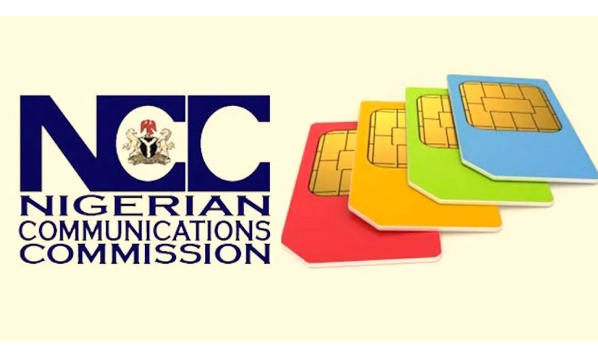
Nigeria’s telecommunications sector witnessed one of its steepest corrections in recent years as active voice subscriptions plunged by 59.7 million in 2024, following the strict enforcement of the National Identification Number–Subscriber Identity Module (NIN–SIM) linkage policy.
This is according to the Nigerian Communications Commission’s 2024 Subscriber and Network Performance Report.
The number of active lines fell from 224.7 million in 2023 to 164.9 million in December 2024, representing a 26.6 per cent year-on-year decline. The NCC attributed the sharp drop to the mass deactivation of SIM cards not linked to verifiable NINs, as well as the correction of a long-standing subscriber-count discrepancy by one major mobile operator.
The nationwide clean-up stemmed from the Federal Government’s sustained push to ensure all SIM cards are tied to valid NINs — a policy launched on 4 February 2020 and jointly implemented by the NCC and the National Identity Management Commission.
After multiple deadline extensions between 2023 and 2024, the government set 14 September 2024 as the final compliance date. From 15 September, any SIM without a verified NIN was automatically barred.
Authorities say the policy aims to curb the criminal use of anonymous SIM cards, strengthen national security, build a reliable digital identity database, and deepen financial inclusion through secure digital services.
In September, President Bola Tinubu disclosed that over 126 million Nigerians had been captured in the National Identity Database. He added that the government had expanded the system’s capacity from 100 million to 250 million records to eliminate enrolment bottlenecks and move closer to universal coverage.
The far-reaching impact of the clean-up also showed in other industry indicators. Teledensity fell from 103.66 per cent in 2023 to 76.08 per cent in 2024. Internet subscriptions dropped from 163.8 million to 139.3 million, a loss of 24.6 million users or 14.98 per cent within the period.
However, the NCC noted that network expansion continued despite the subscriber decline. The country achieved over 95 per cent cellular coverage, while broadband penetration inched up from 43.71 per cent to 44.43 per cent, supported by extensive 3G (89 per cent), 4G (84 per cent) and emerging 5G (13 per cent) availability.
Fresh NCC data for 2025 suggest that the market is stabilising. Active telephone lines rose to 173.54 million in September 2025 from 171.57 million in August. Internet subscriptions on GSM networks also edged up to 140.36 million, while teledensity improved to 80.05 per cent — early signs of renewed user growth and a gradual post-clean-up recovery.